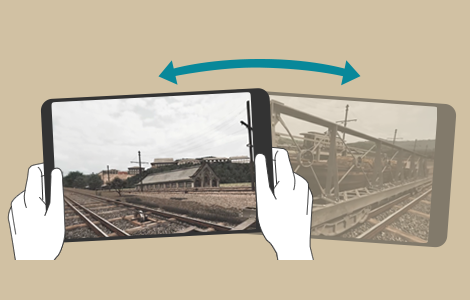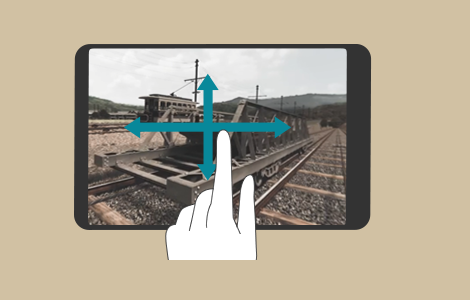Overview
The Gosho Waterworks were developed to send water from the Lake Biwa Canal for firefighting use at the Kyoto Imperial Palace.
At normal times, water was sent at low pressure directly from the sluice gate in the basement of this pumping station directly to the Kyoto Imperial Palace via water pipes buried underneath the city. At times of emergency, the water would be pumped up to the Mt. Dainichi reservoir, about 30 meters above the city, and the elevation difference would be used to send water at high pressure.
This Former Gosho Water Pumping Facility housed the pump used that drew water from the Keage Berth up to the Mt. Dainichi reservoir.
Built in a neo-Renaissance design, it has Tuscan-style classical-order pillars on the side facing the Lake Biwa Canal, and a balcony above the porch on the eastern side.
History
Concerned about insufficient water supplies for the Kyoto Imperial Palace and poor water quality, the Imperial Household Ministry began deliberation of the construction of the Gosho Waterworks, which would send a large, stable supply of relatively sanitary water to the Palace. Starting in 1899, meticulous investigations were carried out, led by Sakuro Tanabe, the Chief Engineer on the canal construction works.
The design drawings were completed in May 1900. However, due to the need to prepare and pay for the Russo-Japanese War of 1904-05, several years passed without the budget being procured for construction of the waterworks.
After the end of the Russo-Japanese War and the official decision on the City of Kyoto’s three major projects, plans for the development of the waterworks emerged once more. The works budget was approved by the Imperial Diet in May 1910, and construction began later that year under the direct management of the Imperial Household Ministry.
Construction was virtually completed in 1912, around the same time as the completion of the No. 2 Canal and the Keage Water Treatment Plant. After installation of the pumps, the results of hydraulic tests and high-pressure jet spray tests were favorable, and the Gosho Waterworks, including this Pumping Facility, were completed on May 14, 1912.
There is a record of the facilities being used for fire fighting on just one occasion, when a fire broke out in the Kogosho, one of the Palace buildings, in 1954.
Subsequently, due to the deterioration of the water pipes, it was decided to pump the water required by the Kyoto Imperial Palace from underground water sources. In 1992, the water pipes were filled in with mortar and the sluice gates were removed. With this, the Gosho Water Pumping Facility ceased drawing water from the Lake Biwa Canal.
Designer: Tokuma Katayama
The facility was designed by Tokuma Katayama, who was then Chief Officer, and Naosaburo Yamamoto, Engineer, of the Imperial Household Ministry’s Construction Office. Katayama is well known for designing the Kyoto Imperial Museum (now the Kyoto National Museum), and the Togu Palace (now the Akasaka Palace State Guest House).
Katayama’s wife, Teru Tanabe, was the older sister of Sakuro Tanabe, who assisted his brother-in-law in the construction of the new Gosho Waterworks as an expert engaged by the Construction Office.














